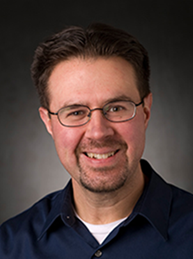
Date: Sunday, 16th February 2025, 9:00-11:25
Location: This seminar is in person only in D01-201, School of Chemical Engineering, Ocean and Life Sciences.
Time | Speaker | Activity / Topic |
9:00-9:05 | Xinwen Guo | Opening Speech |
9:05-10:05 | Michael Janik | Applications of Machine Learning/Artificial Intelligence in Heterogeneous Catalysis |
10:05-10:25 | Xinyue Wang | Electrocatalytic Conversion of Carbon Dioxide to High-Value-Added Chemicals |
10:25-10:45 | Jiasheng Wang | Research on Nano Heterogeneous Catalysis for Hydrogenation and Oxidation Reactions |
10:45-11:05 | Xuezhi Song | Electrocatalysts for Water Splitting and Ammonia Synthesis: Rare Earth Promotion and Beyond |
11:05-11:25 | Anmin Liu | Electrocatalytic Synthesis of Ammonia: In-depth Investigation from Material Modification to Mechanism Analysis |
Guest Speaker:

Dr. Michael Janik is a Professor of Chemical Engineering and Associate Director of the Institute of Energy and the Environment at Pennsylvania State University. His research interests are in the use of computational methods to understand and design materials for alternative energy conversion systems. Current activities address a wide-range of energy technologies including fuel cells and electrolysis, intermetallic and single-atom catalysis, and organic electronics. Research methods emphasize atomistic simulation using quantum chemical methods and kinetic modeling. Dr. Janik also holds the title of Visiting Professor at Dalian University of Technology. Dr. Janik received his B. S. in Chemical Engineering from Yale University. He completed his doctoral studies at the University of Virginia under the advisement of Bob Davis and Matt Neurock. Dr. Janik leads a highly collaborative research program of 15 graduate students, has co-authored over 220 peer reviewed papers, and co-edited the book “Computational Catalysis” (with Aravind Asthagiri).
Abstract:
This talk will provide an overview of how ML/AI tools are being used in heterogeneous catalysis research. Emphasis will be on the use of these tools within an overall computational catalysis research program, though examples will also highlight integration with experimental kinetic data. The talk will discuss uses of these tools without providing details of the underlying algorithms. Examples will be taken from our group’s research, including the use of “descriptor” searching tools to predict single metal atom binding to oxide surfaces, high-throughput workflows in developing intermetallic catalysts, and advancing fitting procedures to reconcile experimental kinetics to elementary reaction mechanisms.